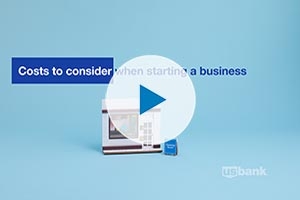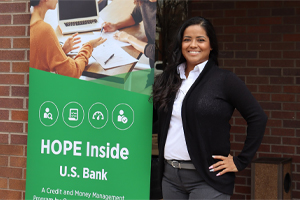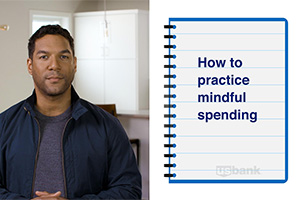
Multiple accounts can make it easier to follow a monthly budget

Costs to consider when starting a business

Key components of a financial plan

How to track expenses

How to manage your finances when you're self-employed

Good money habits: 6 common money mistakes to avoid

Transitioning from the military to the civilian workforce

How to Adult: 5 ways to track your spending

11 essential things to do before baby comes

Webinar: Uncover the cost: Starting a family

Preparing for adoption and IVF

How does money influence your planning?

College budgeting: When to save and splurge

How to save money in college: easy ways to spend less

How to gain financial independence from your parents

Practical money skills and financial tips for college students

Tips to earn that A+ in back-to-school savings

Loud budgeting explained: Amplify your money talk

How to financially prepare for pet costs

Pros and cons of a personal line credit

3 tips for saving money when moving to a new home

Tips for handling rising costs from an Operation HOPE Financial Wellbeing coach

3 ways to keep costs down at the grocery store (and make meal planning fun)

5 tips for creating (and sticking to) a holiday budget

Should you buy now, pay later?

Financial checklist: Preparing for military deployment

5 things to consider when deciding to take an unplanned trip

How I kicked my online shopping habit and got my spending under control

Growing your savings by going on a ‘money hunt’

Working with an accountability partner can help you reach your goals

Why a mobile banking app is a ‘must have’ for your next vacation

How to decide when to shop local and when to shop online

How I did it: Learned to budget as a single mom

Your 5-step guide to financial planning

Webinar: Common budget mistakes (and how to avoid them)

Uncover the cost: Wedding

What military service taught me about money management

Adulting 101: How to make a budget plan

Helpful tips for safe and smart charitable giving

Allowance basics for parents and kids

Mindset Matters: How to practice mindful spending

How to save money while helping the environment

How can I help my student manage money?

How to manage money in the military: A veteran weighs in

You can take these 18 budgeting tips straight to the bank

Save time and money with automatic bill pay

How to best handle unexpected expenses

Stay on budget — and on the go — with a mobile banking app

Do you and your fiancé have compatible financial goals?

U.S. Bank asks: Transitioning out of college life? What’s next?

U.S. Bank asks: Do you know your finances?

U.S. Bank asks: Do you know what an overdraft is?

Personal finance for teens can empower your child

It's possible: 7 tips for breaking the spending cycle

How to save for a wedding

Here’s how to create a budget for yourself

Don’t underestimate the importance of balancing your checking account

9 simple ways to save

7 steps to prepare for the high cost of child care

Tips for working in the gig economy

Dear Money Mentor: How do I set and track financial goals?

Lost job finance tips: What to do when you lose your job

Tips to raise financially healthy kids at every age

Money management guide to financial independence

7 financial questions to consider when changing jobs

30-day adulting challenge: Financial wellness tasks to complete in a month

What’s in your emergency fund?

Certificates of deposit: How they work to grow your money

Practical money tips we've learned from our dads

What I learned from my mom about money

How to increase your savings

What financial advice would you give your younger self?

Consolidating debts: Pros and cons to keep in mind

Spring cleaning checklist for your home: 5 budget-boosting tasks

Military homeownership: Your guide to resources, financing and more

Are professional movers worth the cost?

Beyond the mortgage: Other costs for homeowners

Improving your credit score: Truth and myths revealed

